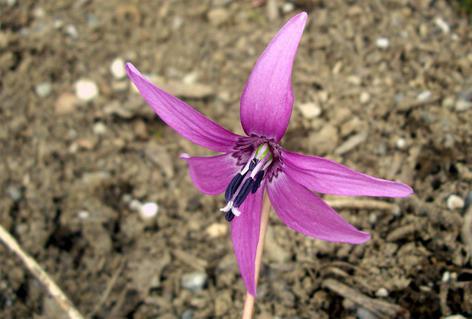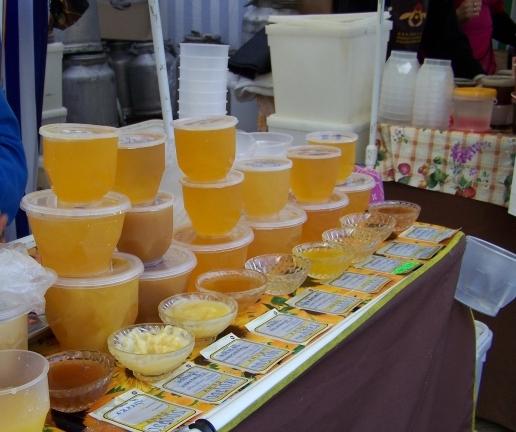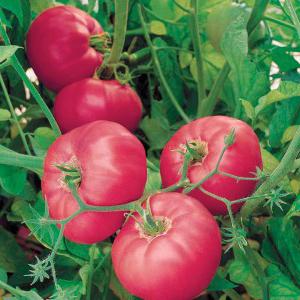Kandyk the Siberian: description, photo
Siberian Kandyk is a herbaceous perennial plant of the Liliaceae family. Included in the Red Book.

Kandyk the Siberian: description
The plant is up to 30 cm tall. Bulb 3-8 cm in height and in diameter up to 1 cm, narrow-conical, periodically practically cylindrical. Leaves are closer to the base of the stem or at the middle in the number of two; short-petioled, opposite, elongated or ovate-lanceolate, monochrome reddish-brownish or greyish-green, spotted with green spots, up to 15 cm long, 3-6 cm wide.
Siberian Kandyk, photo of which is presented inthis article has a single flower, a large, drooping perianth, consisting of six leaves, bell-like at the base, diverging and curving outward. In perianth, leaves are pinkish-purple, violet-pink, sometimes white, up to 7 cm long, up to 12 mm wide. Internal leaves at the base of the perianth are small, perpendicular to the outgoing.
Six stamens, twice as shortperianth, with oblong-linear anthers. Flat stamen filaments, spindle-swollen in the middle and strongly refined on the apex. The pistil is slightly longer than the stamens (approximately 20 mm long). Filiform column, thickening at the top, with a 3-pronged stigma, whose lobes are mostly bilateral. Back-ovate ovary.

Flowering occurs at the end of April. Fruit - almost spherical, back-ovoid, triangular box up to 20 mm long and up to 12 mm wide. Seeds a little.
Geography
The Kandyk Sibirian plant is spread inSiberia, in addition, penetrates into the mountains of Central Asia, Mongolia and China. The largest in southern Siberia, to the west of the Yenisei River: Altai, Kemerovo, Novosibirsk and Tomsk regions, Khakassia. East of the Yenisei is less abundant. Eastern locations belong to the Western Sayan (Karatuz and Ermakovsky districts of the Krasnoyarsk Territory). In the north reaches the latitude of Krasnoyarsk (mainly west of the Yenisei).
Taxonomic structure
For Kandyk, there is a significant variability. Local populations of the plant are heterogeneous, and often you can meet a number of markedly different species: with variegated and one-color leaves, flowers of different sizes and shades of lilac-pink. Many plants were introduced as the most decorative in culture. As a result, new varieties were derived from them. Among them are the following:
- White Fang. It blooms at the end of April 30. Purely white flowers with a yellow center, about 6 cm in diameter. The leaves and the flower bud are green.
The White Tsar. It is an early variety with flowering in mid-April. Purely white flowers with a lemon center framed by reddish, barely noticeable dots. The branches at the end become chalmoid. Bright green leaves.
- Olga. This Siberian candle blossoms in late April. Flowers pink-lilac, covered with pink dots, with a thin white edging. The leaves are green-brown with a strip at the very edge. There are other types.

Ecology
Ephemeroid, bulbous geophyte, dwells in birch-aspen, mixed and coniferous forests, occurs in the blackened taiga, while it rises to the mountains to 2800 m. It grows on non-ground moist soils.
Siberian Kandyk (photos can be seen in thisarticle) is one of the most early flowering plants. It starts to bloom when the snow melts. In South Siberia, this period begins in April and ends in mid-May (which depends on the time of melting snow and the region). In the mountains, this happens later. During the flowering period there are snowfalls and night frosts. At the same time plants are exposed to relatively low temperatures and they are transferred without any damage.
During the cold snap and at night candy flowerscloses, after sunrise - again reveals them. In the case of warm spring, the plant very quickly fades. If the spring is long and cold, then the flowering of some plants can last more than two weeks.
It should also be noted that this plantinsectophilous. It is very actively visited by bumble bees and bees. Often sterile during self-pollination. Within a month, discolouration forms mature capsules with large seeds attached to the appendage. The above-ground parts of the flower, after dispersing the seeds, quickly die, within 1-2 weeks, die. This happens in the low-mountain strip by mid-summer.

Security status
Kandyk the Siberian is included in the Red Book of Russia andregions in which this species occurs: the Krasnoyarsk Territory, Khakassia, the Altai Territory, the Tomsk Region, and the Novosibirsk Region. It is considered a vulnerable relic species. It should also be noted that local distribution increases the threat of complete destruction of this species.
Despite the massive growth of KandykSiberian in some regions, the threat of its existence as an aboriginal full-fledged species remains. Of great importance are the factors of deforestation of natural habitats, in addition, the collection of a species for sale for food purposes or as a decorative early spring plant. In the markets in Siberian cities, in spite of the protected state status of the species, in April they sell bouquets from this plant.
Usage and meaning
Siberian Kandyk is a valuable food and ornamental plant.
One of the most decorative and bright species of the genus. Incredible value is the early flowering, which, as already mentioned above, occurs immediately after the melting of snow, when the remaining flowering species is small. Incredibly cold. To date, a large number of Kandyk Siberian species have been hatched, which differ in their decorative features, the period of flowering.
Kandyk the Siberian is used in gardening onlawns - spots along with the rest of perennials. The original appearance and early flowering make it a very interesting and valuable plant. Large bulbs are used for distillation, the flowers cost several days in the water.

But this is not all areas where the application of KandykSiberian. Honey is harvested from it in the early spring. It has a clear color and a very pleasant aroma. Bulbs of the plant can be eaten, earlier they were harvested massively in some parts of Southern Siberia. In addition, bulbs are eaten by animals, including wild boars.
</ p>




